Abstract: Fifteen months after the Church of Christ’s inception in April 1830, Joseph Smith received a revelation indicating that Independence, Jackson County, Missouri, was to be the “center-place” of Zion and a “spot for a temple is lying westward, upon a lot that is not far from the court-house.” Dedication of this spot for the millennial temple soon followed on August 3, 1831, by Joseph Smith and Sidney Rigdon. A building sketch was prepared in Kirtland, Ohio, and sent to church leaders in Independence in June 1833. Smith also forwarded his plat for the City of Zion, showing 24 temples at its center and giving an explanation for their use. Tragically, the church was driven en masse out of Jackson County only months later. Reclaiming the original Partridge purchase in December 1831, known as the Temple Lot, became an early driving force for the membership of the church. A physical effort to reclaim the saints’ land and possessions in Jackson County was organized in 1834 by Joseph Smith and became known as “Zion’s Camp.” After traveling 900 miles and poised on the north bank of the Missouri River looking toward Jackson County, Smith’s two hundred armed men were unable to proceed for various reasons. While contemplating what to do, given the reality of their situation, Smith received a revelation to “wait for a little season, for the redemption of Zion.” That poignant phrase — “the redemption of Zion” — became a tenet of the church thereafter. In the years following the martyrdom and the subsequent “scattering of the saints,” three independent expressions of the Restoration returned to Independence to reclaim or redeem the Temple Lot in fulfillment of latter-day scripture. This essay examines their historical efforts.
[Page 146][Editor’s Note: Part of our book chapter reprint series, this article is reprinted here as a service to the LDS community. Original pagination and page numbers have necessarily changed, otherwise the reprint has the same content as the original.
See R. Jean Addams, “The Past and Future of the Temple Lot in Independence, Jackson County, Missouri,” in Proceedings of the Fifth Interpreter Foundation Matthew B. Brown Memorial Conference, 7 November 2020, ed. Stephen D. Ricks and Jeffrey M. Bradshaw, Temple on Mount Zion 6 (Orem, UT: The Interpreter Foundation; Salt Lake City: Eborn Books, 2021), in preparation. Further information at https://interpreterfoundation.org/books/the-temple-past-present-and-future/.]

Figure 1. Temple Lot, 1907.
Wherefore, this is the land of promise, and the place for the city of Zion … the place which is now called Independence is the center place; and a spot for the temple is lying westward, upon a lot which is not far from the courthouse (Doctrine and Covenants 57:2–3, The Church of Jesus Christ of Latter-day Saints edition, hereafter LDS Doctrine and Covenants; cf. Doctrine and Covenants 57:1b–d, Reorganized Church of Jesus Christ of Latter Day Saints edition, hereafter RLDS Doctrine and Covenants).1
[Page 147]Prior to the first Mormon missionaries arriving in Independence, Jackson County, Missouri, in January 1831, the Lord orchestrated, over time, a series of events to prepare the Millennial Temple Lot. These events enabled a legal representative of his recently restored church, then known as the Church of Christ, to purchase the property.2 First, I will briefly review the events preceding and during the Joseph Smith-led trip to western Missouri in the summer of 1831. I will then summarize the prophet’s description of the future temple and city of Zion that dates to June 1833. Next, I will explore the events following the expulsion of the Church from Jackson County in November 1833 and the revelatory mandates given to Smith regarding the redemption of Zion, which commenced in October 1833. Beginning in 1834, efforts to redeem Zion became a significant part of the trials of the young church thereafter.
This determination to return to Jackson County and redeem Zion, and specifically the temple site, became more complicated with the murder of the Prophet Joseph Smith in June 1844. In the years that followed that tragic event, schisms evolved within the original Church. Among several, there are three significant church organizations, viable today, that will be examined as they went about their independent ways to facilitate that return and redeem theme. Each church hoped to reclaim the original dedicated temple property and to eventually build the Millennial Temple. I will conclude with a look at the current status of each of these churches and their expectations for the future of the Temple Lot, located in Independence, Jackson County, Missouri.
The Organization of Jackson County
Provision for the future journey of the first missionaries of the Church of Christ organized by the young prophet Joseph Smith Jr. on April 6, 1830,3 began with the completion of the US government survey of the land within the proposed boundaries of Jackson County. The Missouri legislature subsequently organized Jackson County4 on December 15, 1826.5 Three months later in March 1827, a small but growing frontier village located at the departure point of the trade-lucrative Santa Fe Trail6 was officially selected as the county seat. The village was named Independence.7 However, the anticipated US government sale of the recently surveyed land within Jackson County was not made available for sale for nearly two years.8 To the early squatters or settlers in what was to become Jackson County, many of whom had pioneered in the area as early as 1821,9 this unexplained delay was a major frustration.10
[Page 148]The importance of squatter’s rights and seminary land designations and their impact on Jackson County is essential in understanding the land ownership situation at the time Joseph Smith and party arrived in Independence in July 1831.11 The westward expansion of the United States was directly impacted by squatter’s rights.12 Simply, a squatter was an individual who selected a piece of public land (often referred to as the Public Domain) and then settled or squatted upon it. The Land Act of 1820 set the price at $1.25 per acre and the minimum tract at 80 acres after an official survey by the US government.13 Seminary sections were transferred to the state to provide funds for the creation of a university. Without explanation, nearly 60% of the 72 sections that the US Congress designated14 as seminary lands for Missouri were set aside within Jackson County.15 The rationale for this disproportionate allocation to Jackson County, according to Missouri historian Annette Curtis, was “because the sections chosen were predominantly near the Missouri River, and, therefore, theoretically more valuable.”16 Independence was surrounded by seminary land sections.17
When the US government sale of land was finally announced for November 6, 1828, many of the early squatters of Jackson County were informed that they were on seminary land and that Missouri was allowed to hold these seminary sections for an unspecified period and to set a higher minimum price per acre.18 Already upset with the delay in purchasing their land, these squatters were going to have to wait even longer to be able to obtain legal title for their property. Adding to their disappointment, the Missouri Legislature announced that the minimum price per acre was to be $2.00, rather than the US government price of $1.25 per acre, which they had anticipated.19 No date for a seminary land sale was announced at this time.
1821–1831: Early Settlers of Independence
James Shepherd, a cousin of General William Clark, had heard from Clark and others “glowing accounts of the territory west of the Mississippi.”20 Adventurous like his cousin, Shepherd assembled a group of family and close friends in Virginia and journeyed west via Kentucky to the territory of Missouri perhaps as early as 1821.21 This group included the family of Dr. Lawrence Flournoy, a cousin of Shepherd.22 Lawrence and his wife, Theodocia Hoy, were the parents of five sons: Hoy, Rowland, Solomon, Jones H., and Lawrence. These sons were all adults at the time of the trip west. It is probable that the Flournoys joined the Shepherd party as they traveled through Kentucky en route to western Missouri inasmuch [Page 149]as the available family records indicate that the sons were all born in Kentucky.23 The Shepherd group continued their travel southwest, obtained passage on a steamboat at St. Louis, disembarked at Fort Osage, and continued along the Osage Trace to the Big Spring area that William Clark had recommended to them24 This chosen location soon became the eventual town site of Independence.
Lawrence and Theodocia Flournoy’s fourth son, Jones Hoy Flournoy, was, or became, a gunsmith, harness repairer, and farmer. Jones, like his siblings and parents, quickly staked out his squatter’s land claims (160 acres and more)25 in the immediate area and proceeded to clear land, farm, and trade. Jones built a house26 and a trading-post made of bricks soon thereafter, and by the late 1820s, Flournoy was a well-known supplier and trader for the Santa Fe traffic27 and the Postmaster for Independence.28 His squatter’s claim would play a vital role in the acquisition of the Temple Lot.
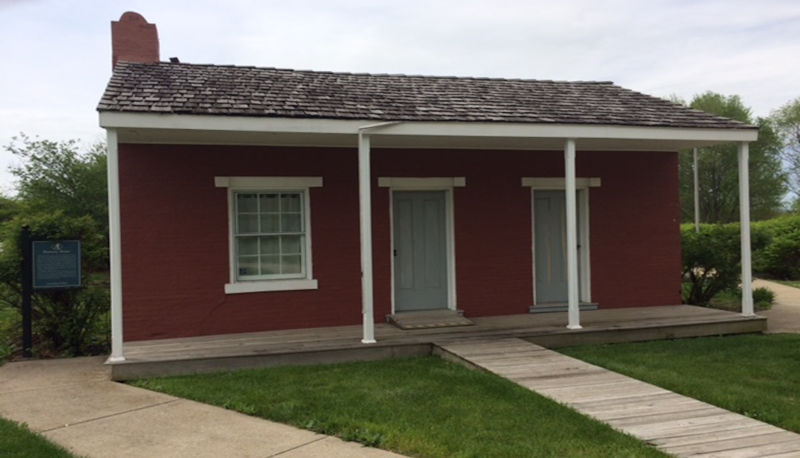
Figure 2. Flournoy House. Built ca. 1826, Photograph 2018.
February–July 1831: The Arrival of the Mormons
in Jackson County
Joseph Smith Jr. and the early missionaries of the Church of Christ preached a restored gospel heavily punctuated with a millenarian spirit that the prophesied return of Christ to this earth and the commencement of his Millennial Reign was imminent.29 New Testament and Book of Mormon references to Zion and a New Jerusalem were common themes.
[Page 150]In answer to prayerful inquiry by Smith, regarding where the New Jerusalem or city of Zion was to be located, he was told: “No man knoweth where the city Zion shall be built, but it shall be given hereafter. Behold, I say unto you that it shall be on the borders by the Lamanites” (LDS Doctrine and Covenants 28:9; RLDS Doctrine and Covenants 27:3d).30 This geographical reference was generally understood by the new adherents to Smith’s church to mean the vast reaches of the American continent west of the state of Missouri, to which US President Andrew Jackson was “strongly encouraging” a relocation of the Indian tribes of the eastern and southeastern areas of the United States.31 Oliver Cowdery and three other missionaries were subsequently designated by revelation and began their journey west “late in October 1830, and started on foot”32 for the “borders of the Lamanites” (LDS Doctrine and Covenants 28:8, 31:5, 32:1–3; RLDS Doctrine and Covenants 27:3a, 28:2a, 31:1a–c).33
On February 9, 1831, soon after Smith had relocated the Church to the Kirtland, Ohio, area,34 he proclaimed, “the time shall come when it shall be revealed unto you from on high, when the city of the New Jerusalem shall be prepared” and where it would be located (LDS Doctrine and Covenants 42:9; RLDS Doctrine and Covenants 42:3b).35
Following the June 3–6, 1831, conference of the Church in Kirtland, additional missionary calls were given by revelation (LDS Doctrine and Covenants 52; RLDS Doctrine and Covenants 52).36 Those called, which included Joseph Smith, were to go to western Missouri, and there the Lord would reveal to them, they believed, where the “city of the New Jerusalem” would be located.37 Smith’s party left Kirtland on June 1938 and reached Independence in mid-July 1831.39
On July 20, 1831, soon after Smith’s arrival in Independence, he received a revelation that designated the small village of Independence as the “center-place” of what was to be the future city of Zion (LDS Doctrine and Covenants 57:1–3; cf. RLDS Doctrine and Covenants 57:1a–d).40 Independence had a population of 200 to 300 individuals, “a court-house built of brick, two or three merchant’s stores, and 15 or 20 dwelling houses.”41 There was also at least one licensed tavern, owned by Solomon G. Flournoy.42 The revelation further specified that “a spot for the temple is lying westward, upon a lot which is not far from the court-house.”43 This revelation was a momentous announcement. Not only had they now been told that they were in the “center-place” of the future city of New Jerusalem, but, of even greater importance, was that they now knew where the Millennial Temple was to be built. It was to this temple, [Page 151]they believed, that the Savior would return to usher in the long-awaited Millennium.44
August–December 1831: The Dedication and
Purchase of the Temple Lot
When the Smith party left Kirtland, they were undoubtedly aware that public land was available for purchase at $1.25 per acre as previously discussed. William W. Phelps, and the others who accompanied the prophet, brought funds with them for that very purpose.45 They would certainly have been knowledgeable about squatter’s rights, but they may not have been familiar with the seminary land designation.
On their arrival, Smith, undoubtedly, would have been briefed on the availability and unavailability of land ownership in Independence and Jackson County and certainly of the seminary land designation and its impact on the Independence area in particular, as the town was surrounded by these sections.46 The long delay experienced by the early settlers in acquiring their squatter’s claims and the significant increase from $1.25 to $2.00 in the sale price per acre being required by the state of Missouri certainly would have also been explained.47 The fact that the state of Missouri owned the seminary lands (which had not been sold and were generally unoccupied except for farming by the original squatters) helps us to see the “guiding hand of the Lord” in preserving the “spot for a temple” as undeveloped property. Smith would have also been informed that the long-awaited sale of seminary land had finally been announced for the first week of December 1831.48 Partridge confirmed his understanding of this information in a letter he wrote to his wife on August 5, 1831.49
Prior to the dedication of that “spot for a temple,” having ascertained its approximate location, Smith and Partridge would have sought out Jones H. Flournoy as the rightful squatter or claimant of the land they wished to purchase. Certainly they would also have obtained permission to proceed onto his claimed property for their planned event.50
[Page 152]
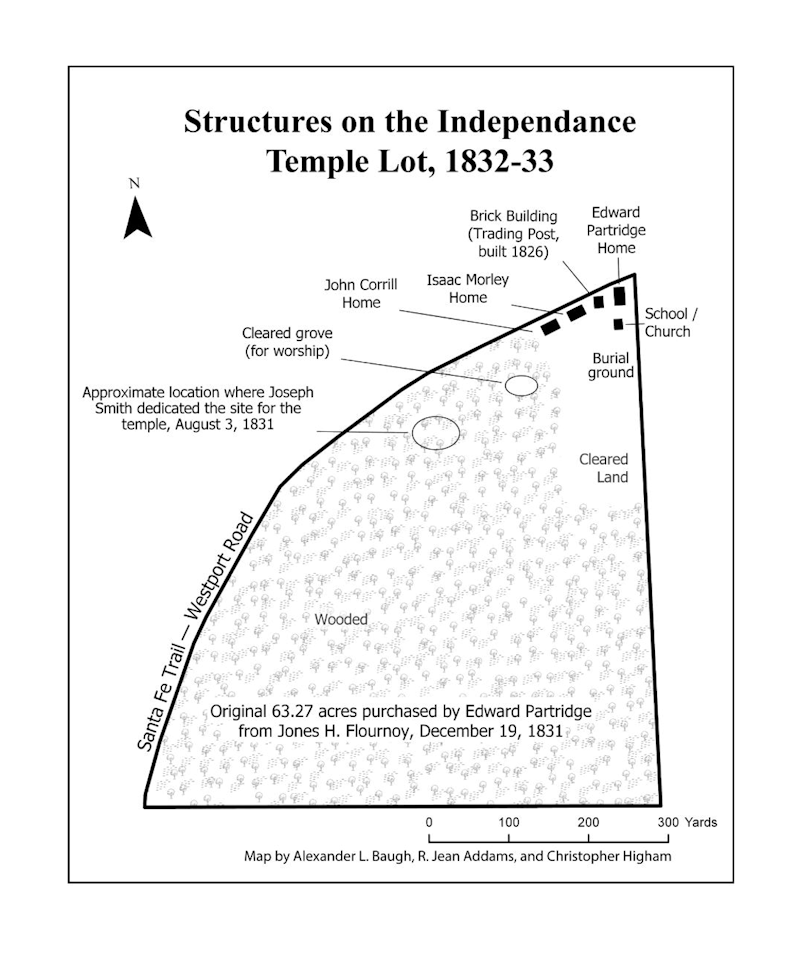
Figure 3. Map of Temple Lot Property, Measuring 63.27 Acres.

Figure 4. Dedication Plaque Casting Near the Temple Lot Site in Independence.
[Page 153]On August 3rd, those privileged to be part of the dedicatory ceremony proceeded to the squatter’s claim of Jones H. Flournoy. The Smith party worked their way through the brush and trees to the highest spot on the property. Orson Pratt recalled: “It was then a wilderness, with large trees on the temple block.”51 His brother Parley P. Pratt remembered that the location was “a beautiful rise of ground about a half a mile west of Independence … it was a noble forest.”52 And William L. McLellin recollected what he had been told: “Joseph cut his way in through this growth of trees, brush and saplings, to reach the site of the dedication for the proposed Millennial Temple.”53 This location was approximately two blocks west of where Flournoy’s home was located and about one-half block southwest of his unoccupied trading post on the Santa Fe Trail.54
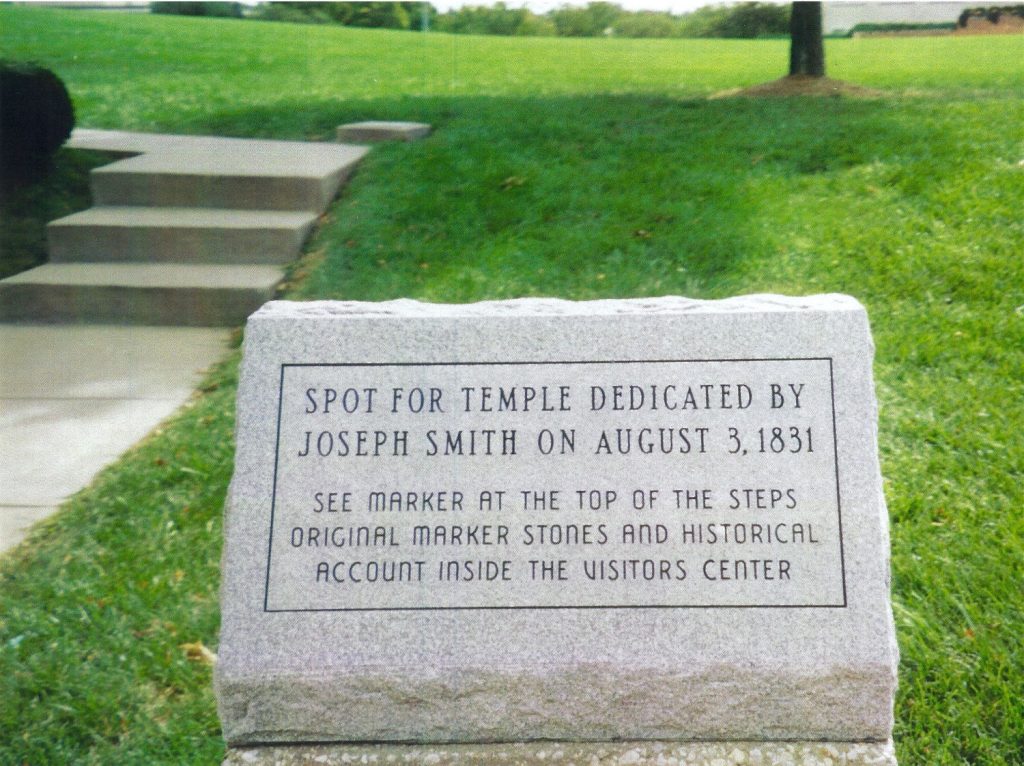
Figure 5. Church of Christ Marker at the Spot of the Temple Site Dedication.
There are five extant accounts of those who participated in the dedication of the Temple Lot on August 3, 1831, and from these records it appears that there were at least thirteen men55 present on this momentous occasion, rather than the traditional eight elders in attendance.56 Once Smith had located “the spot for a temple,” he placed a stone at the northeast corner of the contemplated temple “in the name of the Lord Jesus of Nazareth.”57 This dedicatory service was the culminating event [Page 154]for which the Smith party had come 900 miles to this westernmost outpost of the United States.
On August 9, Smith and party left Independence for the return trip to Kirtland.58 Bishop Edward Partridge was told by revelation to preside over the Church in Jackson County and to make his residence in Independence.59 As a priority, he was certainly instructed by Smith to complete the legal acquisition of the Temple Lot Property from Flournoy when the seminary land sale commenced in early December.
As planned, Jones H. Flournoy acquired his squatter’s claim on December 12, 1831.60 His deed shows that he bought a total of 160 acres for $320.61 One week later, on December 19, Partridge acquired from Flournoy, a 63.27-acre parcel of his 160 acres, which encompassed the dedicated temple site. Partridge paid Flournoy the sum of $130.00 or $2.055 per acre.62 Flournoy netted a profit of $3.48. The temple site and the surrounding property, thereafter, came to be known as the “Temple Lot” or the “Temple Property” by church members and locals alike.63
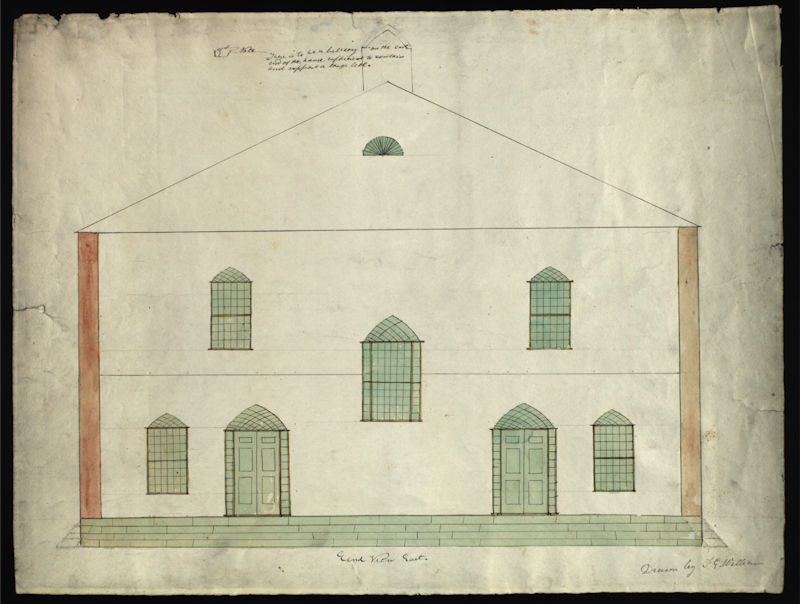
Figure 6. East View, Independence Temple Drawing, August 1833.
[Page 155]
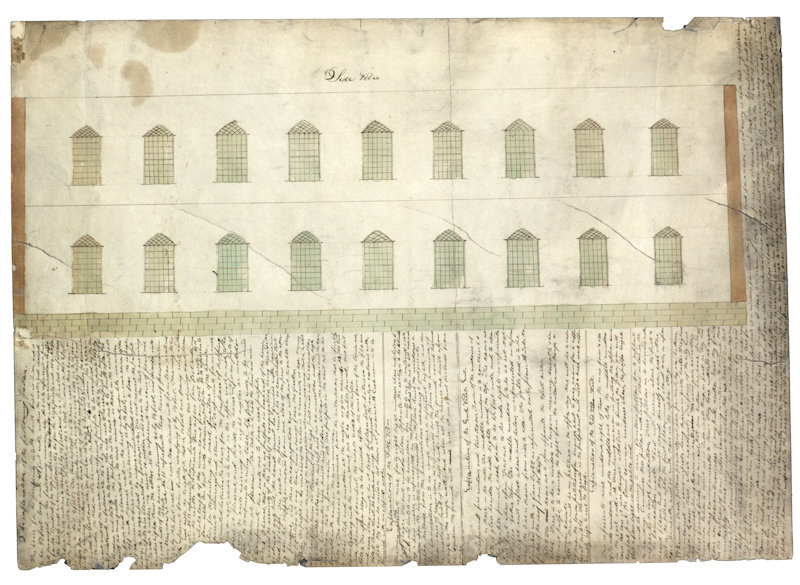
Figure 7. Side View, Independence Temple Drawing, August 1833.
June 1833: Joseph Smith’s Description of the
Future Temple and City of Zion
Although the revelation dictated on July 20, 1831, had contained instructions about the location of the temple for the city of Zion, no description of “the manner in which the temple should be built” was provided until two years later, on June 3 or 4, 1833. At that time, Joseph Smith, Sidney Rigdon, and Frederick G. Williams, the presidency of the Church, “received a vision in which they viewed plans for the [Kirtland] temple, carefully observing its structure and design. … Although the presidency’s vision specifically addressed the Kirtland Temple … the Independence Temple [plan is] remarkably similar in window layout, floor plan, and interior details.”64
A few weeks after the vision, on June 25, 1833, the plat for the city of Zion65 and plans for its temple,66 together with detailed explanations in an accompanying letter, were mailed to Edward Partridge and others in Missouri.67 The package was received in Independence on July 29, 1833.68 Six weeks after the original temple drawings were mailed to Church leaders in Missouri, the drawings were subsequently reviewed by Joseph Smith and Frederick G. Williams and adjustments were made. A revised set of drawings were prepared in August and sent to Partridge and others [Page 156]in Jackson County by special messengers Orson Hyde and John Gould who arrived in late September.69
In actuality, the city plat laid out not one but twenty-four temples at the center, most of them dedicated for church administration by the various priesthood quorums.70 However, the temple plan given in vision was for one or more of the buildings for the Church Presidency. The full name appeared as follows: “House of the Lord, for the Presidency of the High and most Holy Priesthood, after the order of Melchizedek, which was after the order of the Son of God, upon Mount Zion, City of the New Jerusalem.”71
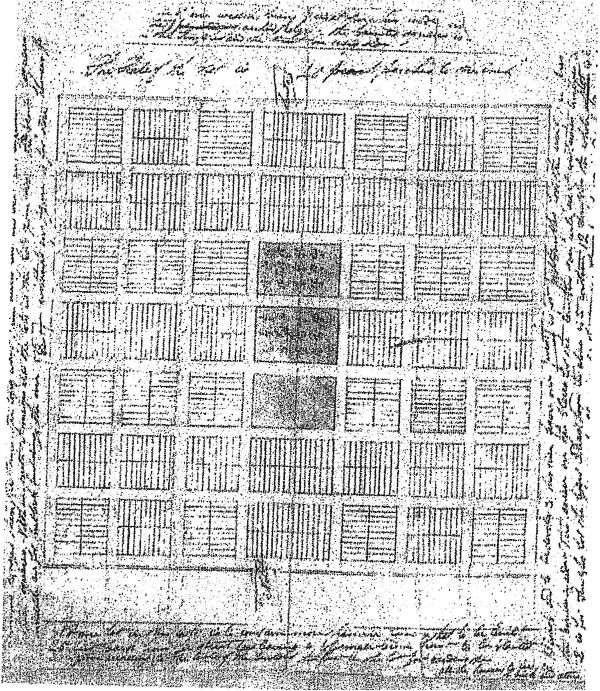
Figure 8. City of Zion Plat Drawing, June 1833.
[Page 157]According to Smith, the city as a whole was “supposed to contain fifteen to twenty thousand people” with sufficient farmland to supply the residents’ needs outside the city on the north and south sides. The idea was to create not one but multiple cities according to this plan: “When this square is thus laid off and supplied, lay off another in the same way, and so fill up the world in these last days.” Thus, in its broad conception, “New Jerusalem was a fairly extensive region,” and “the Jackson County generic label was applied [to include] a large portion of northwestern Missouri,” including Adam-ondi-Ahman, Far West, and Liberty.72 Though the plan for the city of Zion has not yet been implemented in Jackson County, its principles have inspired city layouts in Kirtland, Far West, Nauvoo, Salt Lake City, San Bernardino, and other, smaller Latter-day Saint settlements throughout the western United States and Canada.73
Unfortunately, a number of the citizens of Jackson County began circulating a document on July 18 among the population who were not members of the Church of Christ. This petition enumerated their grievances and called for a meeting to be held on July 20, 1833, to “further discuss their perceived problems with the Mormons and how to remove them from the county.”74 Sadly, the meeting culminated in the subsequent destruction of the William W. Phelps printing establishment75 and home, the “tar and feathering” of Bishop Edward Partridge and Charles Allen, and other acts of violence. It was apparent that this early Mormon sojourn in Zion was about to end.76 Depravations continued against Church members in the weeks that followed. Mobbing, harassments, and violent and deadly encounters on a large and determined scale began on October 31, 1833 and, by early November,77 twelve hundred Saints were driven out en masse out of the county.78 Most of the members fled north across the Missouri River to accommodating Clay County.79
1833–1836: Troubles in Missouri and
Initial Efforts to Redeem Zion
With the forced exodus and abandonment of the Temple Lot Property, a great concern was manifest by both church leaders and members alike regarding the dedicated site of the Millennial Temple. The physical return to Independence and the reacquisition of that sixty-three-acre parcel of land became (and continues to be) a part of the ongoing history of this sacred space.
Joseph Smith was advised of the July troubles and persecutions in Jackson County by Oliver Cowdery upon his hasty return to Kirtland in [Page 158]mid-August 1833.80 He had been sent by church leaders in Independence on July 24 or 25 to inform the prophet of the serious problems facing the Church and to seek advice.81 However, two months later, in what must have been an unsettling revelation, while Smith and Sidney Rigdon were on a brief mission in Perrysburg, New York,82 Smith was told: “And now I give unto you a word concerning Zion. Zion shall be redeemed, although she is chastened for a little season” (LDS Doctrine and Covenants 100:13; RLDS Doctrine and Covenants 97:4a).83 This verse became the first latter-day scriptural use of the word “redeemed” as it pertained to Zion. Four months later, in February 1834, Parley P. Pratt and Lyman Wight arrived in Kirtland to advise Joseph Smith of the pitiful situation of his downtrodden followers, clinging to a mere existence in Clay County, after being forcibly driven out of Jackson County the previous November.84
Shortly thereafter, on February 24, 1834, Smith announced that “the redemption of Zion must needs come by power” and “as your fathers were led at the first, even so shall the redemption of Zion be” (LDS Doctrine and Covenants 103:15, 18; cf. RLDS Doctrine and Covenants 100:3d–e).85 The Church responded with a recruitment effort to redeem Zion. Approximately two hundred able-bodied men assembled, as directed by Smith, at New Portage, Ohio, and departed on May 8, 1834, to travel some 900 miles to Jackson County to reclaim Zion. This quasi-military organization has since been known as Zion’s Camp.86
A month later, however, while encamped on the banks of the Fishing River in Clay County, just north of the Missouri River and Jackson County, word was received that there would be no assistance from Missouri Governor Daniel Dunklin as had been anticipated in facilitating their efforts to regain their land holdings in Jackson County.87 Shortly thereafter, on June 22, 1834, Smith received further revelation: “Therefore, in consequence of the transgressions of my people, it is expedient in me that mine elders should wait for a little season for the redemption of Zion” (LDS Doctrine and Covenants 105:9, 13; cf. RLDS Doctrine and Covenants 102:3c, f).88
[Page 159]
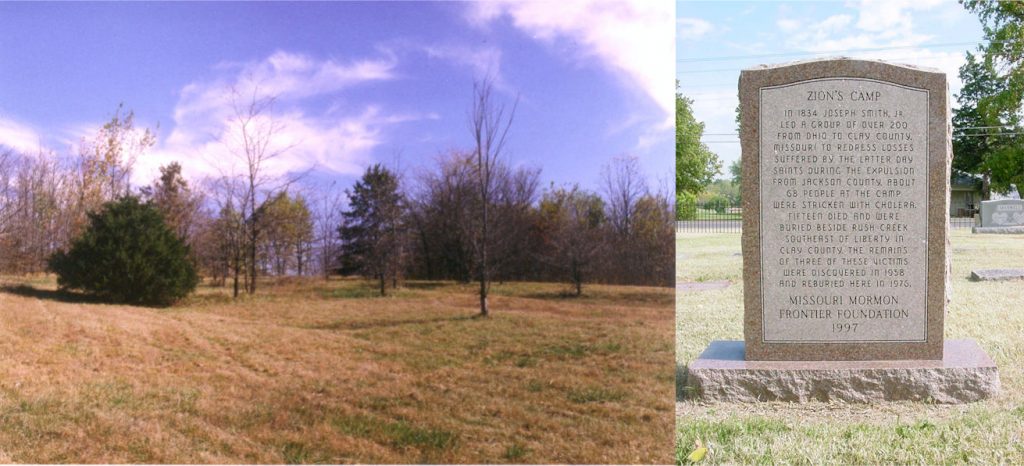
Figure 9. a. Zion’s Camp Location in Clay County, Missouri, 2016;
b. Zion’s Camp Memorial in Mound Grove Cemetery, Independence, 2016.
Coupled with the devastating effects of a cholera epidemic that quickly spread through the ranks of the men (the disease claimed fourteen individuals)89 Zion’s Camp was officially disbanded on June 30, 1834.90 A generally unknown second effort (September 1836), by members of the Church to return to Jackson County to redeem Zion, did not materialize.91
Justifications for these two apparent failures to redeem Zion (1834 and 1836) included internal dissension, a lack of money, and failure to live the Law of Consecration. As the Lord informed Smith in the June revelation: “were it not for the transgressions of my people, … they might have been redeemed even now” (LDS Doctrine and Covenants 105:2; cf. RLDS Doctrine and Covenants 102:2a).92
1838–1839: The Redemption of Zion Postponed
After a four-year effort to strengthen themselves as a church in northwest Missouri, the saints soon found themselves once again contesting with their neighbors.93 The tragic result was that the Church was forced to vacate Missouri by Governor Lilburn W. Boggs’ infamous “Extermination Order” in the late fall and winter of 1838–39.94 With the Church’s departure, the near-term hope of redeeming Zion was replaced with a delayed expectation, that is, that the Church would, indeed, have to “wait for a little season, for the redemption of Zion” (LDS Doctrine and Covenants 105:9, 13; RLDS Doctrine and Covenants 102:3c, f).95
[Page 160]1844 and Succeeeding Decades: Death of the Prophet Joseph Smith and the Scattering of the Saints
After the murders of Joseph Smith and his brother Hyrum in June 1844 at Carthage, Illinois,96 the Church struggled over the question of leadership.97 Several men, besides Brigham Young, claimed the deceased Smith’s prophetic mantle, some of whom attracted numerous adherents among those who stayed behind in Illinois, Wisconsin, and elsewhere. As the claims of Rigdon, Strang, Smith, Wight, Brewster, Miller, Thompson, Bishop, Cutler, and others98 faded, two significant alliances developed in the Midwest some six years later. They are:99 (1) The Church of Christ and (2) the “New Organization” (later, The Reorganized Church of Jesus Christ of Latter Day Saints [RLDS]). A third group, and by far the largest, was The Church of Jesus Christ of Latter-day Saints. Under the leadership of Brigham Young, they made plans for a near-term departure to the Great Basin of the American West.100
Temple Lot Property Ownership after the Exodus of 1833
Questions are often asked regarding the state of ownership of the Temple Lot Property in the intervening years between the forced Mormon 1833 exodus from Jackson County and the late 1860s when members of the returning Church of Christ began to repurchase the individual lots surrounding the traditional 1831 dedication site for the Millennial Temple. The same queries apply to other properties owned by individuals who were forced to leave under the threat of violence as well. Included, of course, is Bishop Edward Partridge, who held property in his name “for and in behalf of” the Church. It should be noted that in the early days of land holdings in Missouri, it was illegal for a church to hold property as a separate entity;101 therefore the Temple Lot Property parcel of 63.27 acres,102 as well as other properties, were held in Partridge’s name.
Depending on the circumstances of ownership of a parcel of property, i.e., whether the property was owned outright or under contract, and whether property taxes had been incurred and were due, often dictated the course of action taken by a county or by an individual in regards to ongoing ownership. Regardless of the forced abandonment of property in late 1833, most of the saints’ Jackson County properties were either subsequently sold at a sheriff’s auction or sale for failure to pay delinquent property taxes or were foreclosed upon by the previous owners who had not been paid under the terms of their respective contracts.
Regarding the Temple Lot Property acreage, oral testimony exists that this property was quitclaimed to Martin Harris from Edward [Page 161]Partridge. Harris’s quitclaim deed was never recorded in Jackson County, however. The obvious reasons for his apparent failure to do so were that he never returned to Jackson County after his 1831 trip, and following the exodus of 1833, it would have been extremely dangerous for a returning Mormon to do so in person.103 However, there is some testimony that Harris did mail the deed to the Jackson County Recorder for proper recording,104 but the deed was likely destroyed upon receipt. If this were so it would have been due to the fact that the postmasters and county clerks, in the years following 1833, were individuals that had organized and/or participated in forcing the saints out of the county, including Jones H. Flournoy, postmaster and Samuel C. Lucas, county clerk.105
In the spring of 1848, a resident of Independence, James Pool, decided to purchase the Temple Lot Property for his own purposes. Pool was well-known by the early members of the Church, dating back to early 1831 wherein, according to Parley P. Pratt, he “entertained us kindly and comfortably.”106 Pool would have known that Edward Partridge was the recorded owner of the 63.27-acre parcel he wished to purchase. Apparently no attempt had yet been made to seize the property due to nonpayment of back property taxes by the county. Regardless, Pool obviously wanted a clear title to the land, and so he sent his agent, a Mr. Pearson, to Winter Quarters to locate Partridge and make a cash offer for a quitclaim deed.107 He may not have been aware that Edward Partridge had died a few years previous in Nauvoo.108
When Pearson arrived at Winter Quarters, he met with a church member J. A. Kelting, who in turn, relayed a message to Brigham Young. Kelting reported that Pearson, an agent of James Pool of Independence, was anxious to purchase from widow Partridge a quitclaim deed for $300. Young called and held a council meeting on April 26, 1848, to discuss the matter.109 In 1839, while imprisoned in Liberty Jail, Joseph Smith reversed his thinking regarding the pronounced policy of “not selling” Jackson County land holdings.110 With this change in policy in mind, Young asked for and received counsel about what course to pursue in regard to the Pool offer for the Temple Lot Property. He stated, as recorded in the minutes of this meeting:
The Temple Lot in Jackson Co. is in the care of the heirs of Bro Partridge. A man [Pool through his agent Pearson] offers [$]300 for a Quit Claim Deed. Bro. Kelting will turn out the 300. The land was deeded to Martin Harris. He has not put the deed on record. Shall we advise Sis. Partridge to go over [Page 162]the mountains. … My object is to get the old Lady [she was 55] over the mountains.111
Young then noted that the Partridge family needed oxen, wagons, horses, groceries, and other provisions to equip themselves for the trip to the Great Basin. Orson Pratt, Heber C. Kimball, and Wilford Woodruff provided input. After deliberation, the council decided to proceed with the arrangement and to have the children of Partridge sign the deed besides Partridge’s widow.112 The sale was made for the equivalent of $300113 and the Partridge heirs114 traveled with Pearson to Atchison County, in the extreme northwest corner of Missouri to legally execute the document. On May 5, 1848, the quitclaim deed was signed before two witnesses and the county clerk.115 Pearson then departed for Independence, and the Partridge family returned to Winter Quarters. Pool subsequently had the deed recorded in the Jackson County property records on May 5, 1848.116
Pool only held the property for a short period of time because of some personal legal difficulties. The sheriff levied on this property and sold it to John Maxwell on September 22, 1848. Maxwell, in turn, made an arrangement with Samuel H. Woodson in February 1851 wherein they became partners in the ownership of the property. The two men then platted the land for what became the Maxwell-Woodson Addition to the city of Independence.117 Thereafter, the individual lots were sold to other individuals and from these various subsequent owners John Hedrick and William Eaton purchased lots 15–22 between 1867 and 1874. These lots comprise the acreage owned today by the Church of Christ.
1852–1878: The Redemption of Zion Begins
The Church of Christ
The earliest church with Mormon roots to stake a claim in Independence after the Nauvoo period was the Church of Christ, which bore the original name of the 1830 church. Beginning in the winter of 1852, members located in north-central Illinois began to meet together at the home of self-appointed, local leader Granville Hedrick, near Washburn, Woodford County. The branch was known as Half Moon Prairie.118 Hedrick was an elder in the original Church.119 Several years later, Hedrick published a revelation. In the first issue of the Truth Teller, the Church of Christ’s newspaper (July 1864), he claimed that the revelation had been delivered to him by an angel on April 2 of that year.120 The heavenly messenger instructed him and his followers to “gather together [Page 163]upon the consecrated land which I have appointed and dedicated by My servant Joseph Smith.” The year of gathering to Jackson County was identified in the revelation as 1867.121
When the members of the Church of Christ relocated, as instructed, to Independence in 1867, they discovered that the city had annexed the Temple Lot Property.122 John Hedrick and William Eaton, thereafter, acquired two-and-a-half acres of that property, including Lot 15, the traditional location where Smith had placed the corner stone in 1831.123 The Church of Christ (historically called the “Hedrickites”) is unique in its early claim to a specific revelation to return as a church to Jackson County and to redeem or reclaim the Temple Lot in the center place of Zion.
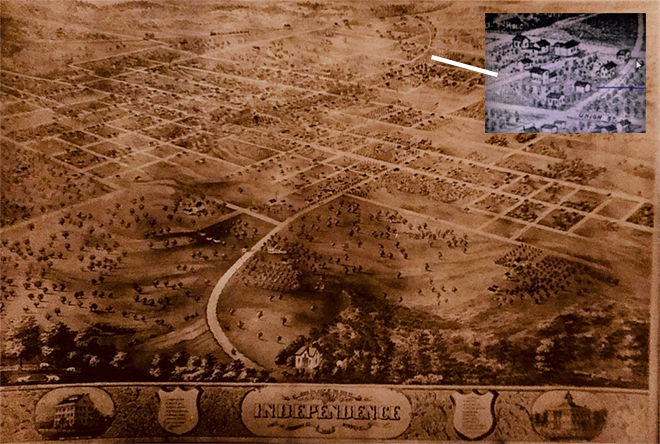
Figure 10. Bird’s Eye View of Independence with Temple Lot Property at Upper Right, 1868.
The Reorganized Church of Jesus Christ of Latter Day Saints
A second group of scattered members emerged under the early leadership of Jason W. Briggs and Zenas H. Gurley Sr., also in 1852.124 These men, elders in Joseph Smith’s original Church, had pondered their options after rebuffing the claims of Brigham Young. Beginning in late 1851, both men independently reported that they had received revelations directing them to reject all claimants to the prophetic mission of the church’s founder. The language of the revelation to Jason W. Briggs [Page 164]stated: “in my own due time will I call upon the seed of Joseph Smith.”125 Both men proclaimed that Joseph Smith’s successor would be Joseph’s eldest son, Joseph Smith III.126 After some correspondence, they agreed to hold a conference in Beloit, Wisconsin, in June 1852. The Briggs and Gurley group initially called itself the “New Organization.”127
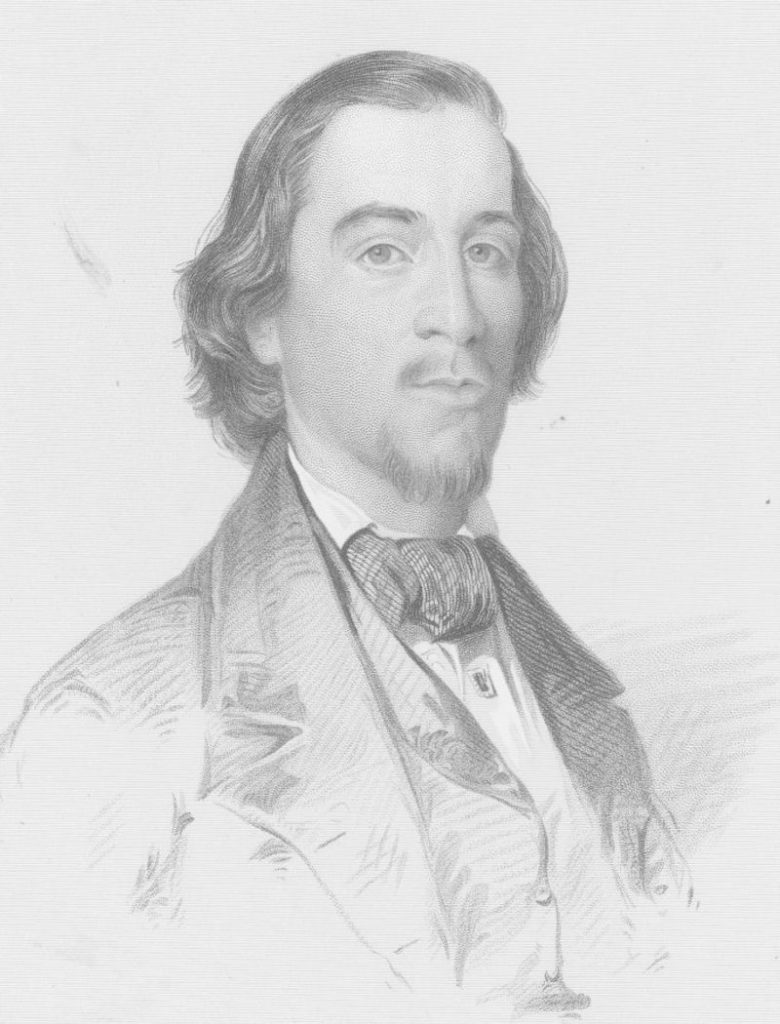
Figure 11. Joseph Smith III, 1855.
In March 1860, Joseph Smith III, after deciding to accept the position of church president, wrote to William Marks,128 advising him, “I am soon going to take my father’s place as the head of the Mormon church.”129 The church established headquarters in Plano, Illinois, and in 1866 changed its name from the New Organization to the Reorganized Church of Jesus Christ of Latter Day Saints.130
Although the RLDS Church had, in no uncertain terms, rejected Hedrick’s revelation to return to Jackson County,131 by 1877 the church was carefully developing its own return to Zion strategy. In January 1877, Smith stated: “We now state that we are decidedly of the opinion that those who may so desire, can move into that state [meaning Missouri] in safety.”132 In the Independence area, RLDS membership grew rapidly in the late 1870s and 1880s.
[Page 165]
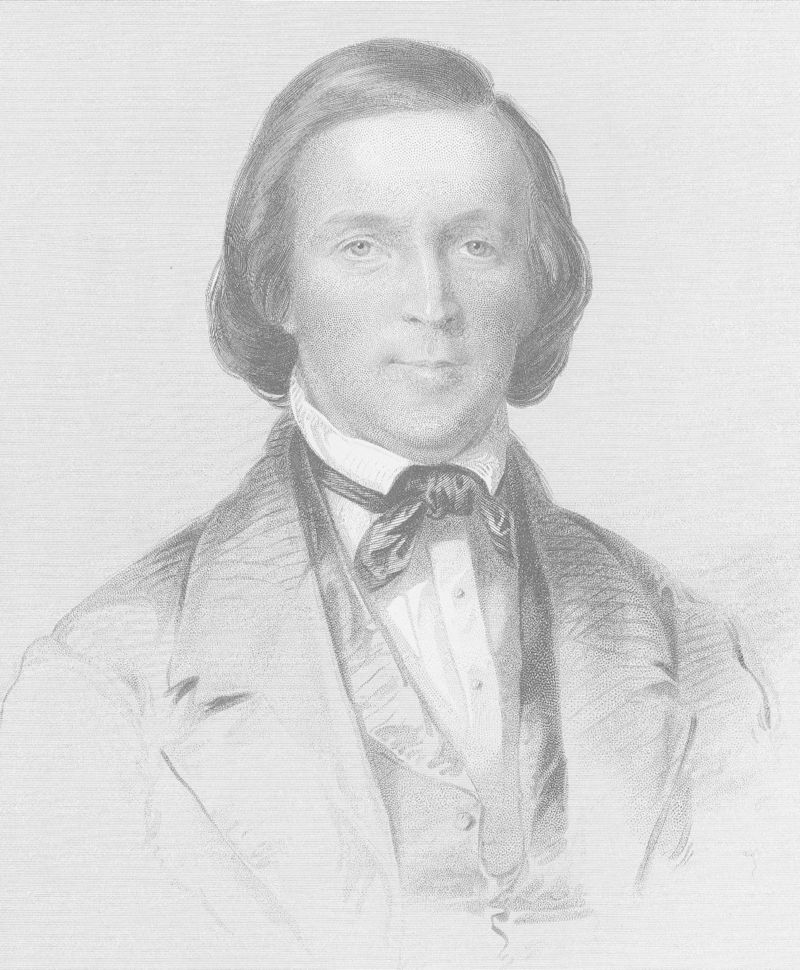
Figure 12. Brigham Young, 1855.
The Church of Jesus Christ of Latter-day Saints
Those who chose to follow Brigham Young to the Great Basin of the American West realized that Zion (Jackson County) would be a considerable distance from where they were heading and intending to settle. However, the Redemption of Zion remained a matter of serious concern for these westward bound pioneers and for the rest of the membership of the Church. Indeed, Young voiced the matter four months prior to the departure of the first pioneer company from Winter Quarters. On January 14, 1847, Young received a revelation wherein he was told to “go thy way and do as I have told you … Zion shall be redeemed in mine own due time” (LDS Doctrine and Covenants 136: 17–18).133 Five years later, with the physical redemption of Zion still fresh in the collective church mind, Young addressed a conference of the Church. In his discourse Young posed this rhetorical question: “When are we going back to Jackson county? Not until the Lord commands His people; and it is just as much as you and I can do to get ready to go, when He does command us.”134
[Page 166]
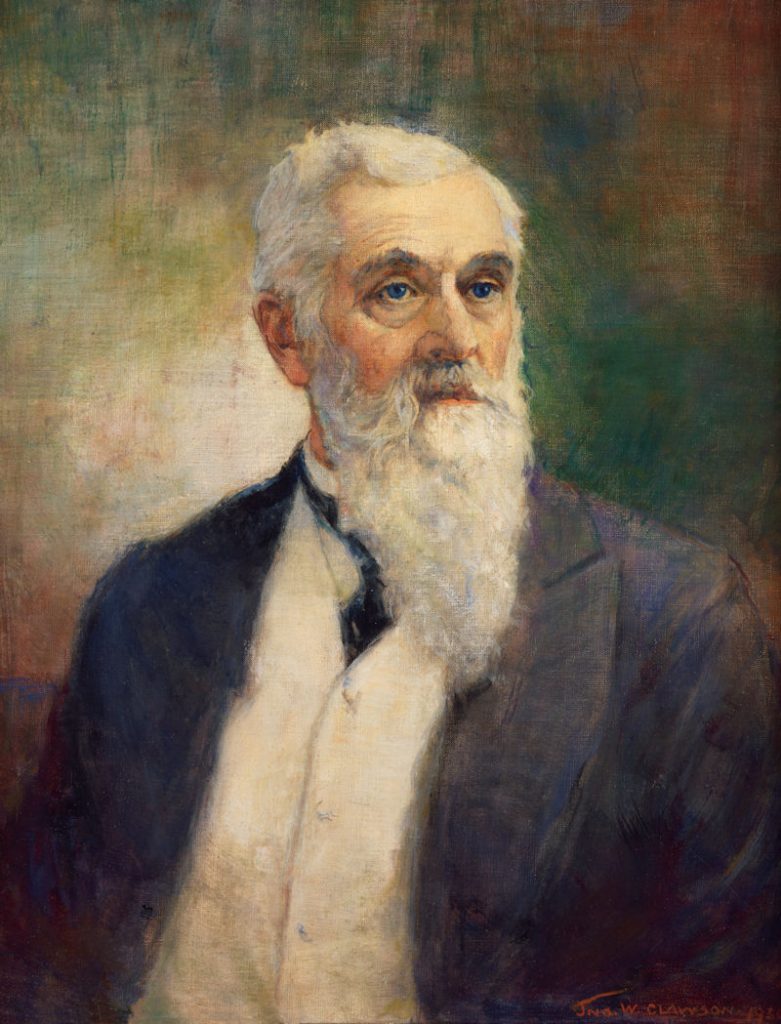
Figure 13. Lorenzo Snow.
The Redemption of Zion continued to be an oft-quoted theme in church conferences and meetings for the next half-century. Forty-seven years later, at a meeting of seven hundred church leaders held in the Salt Lake Temple on July 2, 1899, President Lorenzo Snow preached: “The time for returning to Jackson County is much nearer than many suppose and it is the faithful that will be selected to go.”135
1879–1920: The Return to Zion Continues
The Church of Christ: A Chapel and a Hope of Reconciliation
In the years following the 1867 return to Independence, the Church of Christ had yet to erect a temple or a meetinghouse on their site. They numbered less than a hundred members and perhaps lacked the requisite resources to do so.136 However, possibly spurred on by the construction activity of their rival, the RLDS Church, the Church of Christ conference authorized construction of a house of worship in April 1884.137 However, it was not until April 6, 1887, that a committee was appointed to undertake the construction of “a house of worship … on the Temple grounds.”138 Their 16 x 25 feet building was completed in 1889.139
[Page 167]
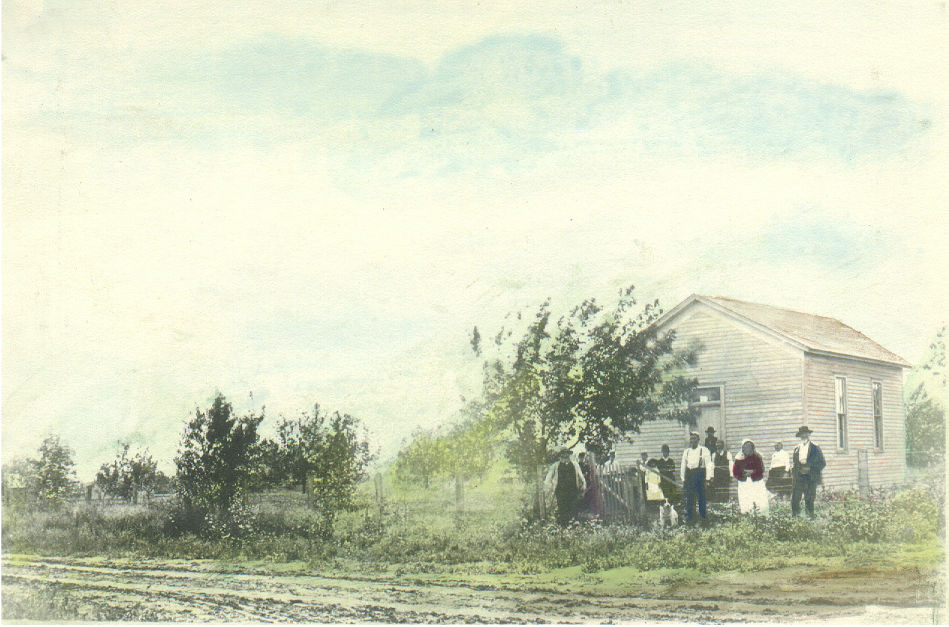
Figure 14. First Known Photo of Temple Lot and Church of Christ Chapel, 1889.
In January 1900, less than one year after The Church of Jesus Christ of Latter-day Saints President Lorenzo Snow’s pronouncement regarding a return to Jackson County,140 Elders John R. Haldeman and George P. Frisbey of the Church of Christ arranged for a meeting at the headquarters of the Reorganized Church of Jesus of Christ of Latter Day Saints with the First Presidency of the latter, consisting of Joseph III, Alexander H. Smith, and Edmund L. Kelley. The Church of Christ’s specific concern was “agreeing upon a common ground upon which the two organizations might unite in an effort to prosecute the work of ‘gathering,’ and the building of the temple at Independence, Missouri,” considered a key element in the Redemption of Zion by both churches.141
At the Lamoni, Iowa meeting, Haldeman proposed that two representatives from the Church of Christ travel to Utah. They hoped to meet with the First Presidency of The Church of Jesus Christ of Latter-day Saints. They wanted the Church to consider participating in conversations with them and representatives of the RLDS Church in Independence in the near future. Although the overall plan was not explicitly endorsed, they were encouraged to proceed with their visit to Utah.142 On the afternoon of February 8, 1900, Elders George P. Frisbey and George D. Cole, as official representatives of the Church of Christ, met with the First Presidency of The Church of Jesus Christ of Latter-day Saints, consisting of Lorenzo Snow, George Q. Cannon, and Joseph F. [Page 168]Smith. The Church of Christ elders stated that they “ought to take some steps towards placing this ground [the Temple Lot] so it can be used for the purpose indicated in the revelations,”143 specifically, the building of a temple.144

Figure 15. Church of Christ Chapel with Members, 1890s.
After two brief follow-up visits, a much anticipated third meeting was convened. Elders Frisbey and Cole expressed their feelings regarding the purpose of their trip to Salt Lake City to a much larger audience, including the three members of the First Presidency, seven members of the Quorum of the Twelve Apostles, and two members of the Presiding Bishopric.145 Afterwards, the Church of Christ brethren were excused so that church authorities could counsel privately.146 President Snow instructed those present to speak freely about the proposed conference and its purpose. However, rather than directly responding to the specific request, George Q. Cannon spoke instead about the 63.27 acres purchased by Bishop Edward Partridge in December 1831 for the young church.147 This acquisition, he pointed out, included the two-and-a-half-acre parcel then held by the Church of Christ. “Our hearts for years have inclined towards the center stake of Zion,” Cannon stated. He then explained that President Taylor created a fund for purchasing land in Jackson County and “the predominant idea in his mind was to watch for a favorable opportunity to buy land in Independence.”148
President Snow then stated that “President Cannon had expressed his views exactly in relation to the purchase of land [in Jackson County],” [Page 169]and confirmed that his mind “was tolerably clear in regard to the redemption of Zion … to purchase the land as opportunity presented without creating excitement.”149 In the discussion that followed, it was concluded that The Church of Jesus Christ of Latter-day Saints would not participate in the conference or the proposed temple project.
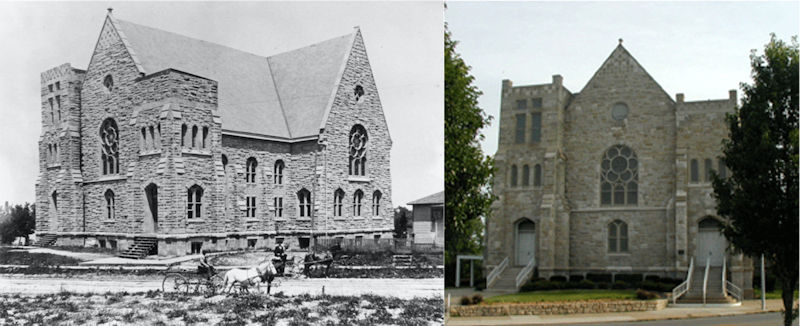
Figure 16. a. Stone Church of the Reorganized Church of Jesus Christ of Latter Day Saints:, ca. 1889; b. More Recent Photo of the Stone Church.
The RLDS Church: Building of the Stone Church and Relocation of Church Headquarters
In 1879, construction began on the Brick Church, the first building erected by the RLDS Church in Jackson County. However, the growing congregation dictated the purchase of a new site for a larger edifice. Property was subsequently acquired across the street from the Temple Lot on Lexington Avenue. By April 1892, the Stone Church was “ready for occupancy.”150
While no official statement was made by Joseph Smith III regarding the building of the Temple in Independence during the first twenty years of his presidency, an article presumably written by him as editor of the Church publication Saints Herald appeared in the June 1878 issue. It was titled “The House of the Lord, As Seen In Vision.” In the article Smith describes, in detail, what the Temple looked like in this highly personal experience.151 Years later in the May 1907 edition of Autumn Leaves (another publication of the Church), there appeared a full page rendition of a painting by Earnest A Webbe titled “Dream Of The Temple That Is To Be.” In the upper left, one can clearly see the completed 1892 Stone Church, thus indicating that the painting was completed between late 1892 and early 1907. Although a poem referencing “A temple fair,” and exhorting the “Saints” to “Prepare ye the way of the Lord,” was printed [Page 170]on the page facing the painting, there was no accompanying article, or further announcement at this time, regarding the construction of a Temple on the Temple Lot. It is noteworthy, however, that in the Webbe painting the Temple is clearly situated on the Temple Lot property owned by the Church of Christ.152
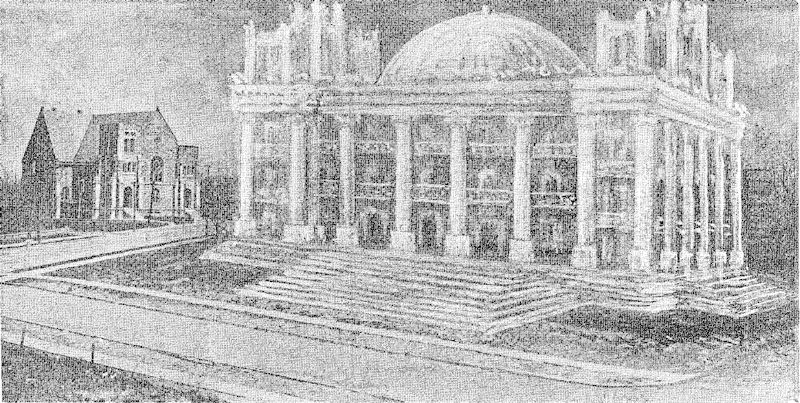
Figure 17. Drawing of “Dream Of The Temple That Is To Be” by Earnest Webbe,
Based on the Vision of Joseph Smith III.
In another article appearing in the Saints Herald in August 1951, C. Ed Miller answered a reader’s question and provided this further insight into the vision of the temple as seen by Joseph Smith III: “Joseph Smith III had a wonderful vision of the temple which will by built on the Temple Lot in Independence, Missouri. He saw it completed and ready for use.” Miller continued to recite many of the particulars of the 1878 article as they related to the inquiry he was addressing.153
Further highlighting the importance of returning to the “center-place,” Joseph Smith III recalled his move of residence to Independence in 1906: “I did so … to fulfill, as I believed, a religious duty to become a resident of the place designated of old as Zion.”154
In April 1920, the RLDS Church voted to relocate the church’s headquarters from Lamoni, Iowa, to Independence. At the same conference the membership of the church endorsed President Frederick M. Smith’s recommendation that a “large auditorium be built in this city” in order “that the general conference might have an adequate building in which to meet.”155 In May 1921 the Saints’ Herald, primary publication voice of the church, also relocated to Independence.156
[Page 171]

Figure 18. Acreage Purchased by Duffin in 1904. Photo Taken in 1910.
The Church of Jesus Christ of Latter-day Saints: Relocation of Mission Headquarters, Purchase of Land, and a Chapel
The February 1900 meetings with the Church of Christ elders seems to have sparked new intensity by church leaders to “redeem Zion.” Only three months later, the First Presidency called James G. Duffin as president of the Southwestern States Mission, headquartered in St. John, Kansas,157 who, with obvious direction, moved mission headquarters to Jackson County in December 1900,158 and which encompassed Missouri. Over the next three-plus years Duffin initiated a quiet search for property near the Temple Lot. In April 1904, he acquired a twenty-six-acre parcel, which included twenty acres of the original Partridge purchase, from the Maggie C. Swope Estate for $25,000.159
The money provided to Duffin for this acquisition came from a fund established for the “purchase of land in Independence, Jackson County, Missouri, and the redemption of Zion.”160 Other property was later acquired.161
Samuel O. Bennion replaced Duffin as Central States Mission president in 1906. The following year Bennion162 moved the mission office of The Church of Jesus Christ of Latter-day Saints from Kansas City to Independence to recently acquired property located to the east of the Temple Lot.163
[Page 172]
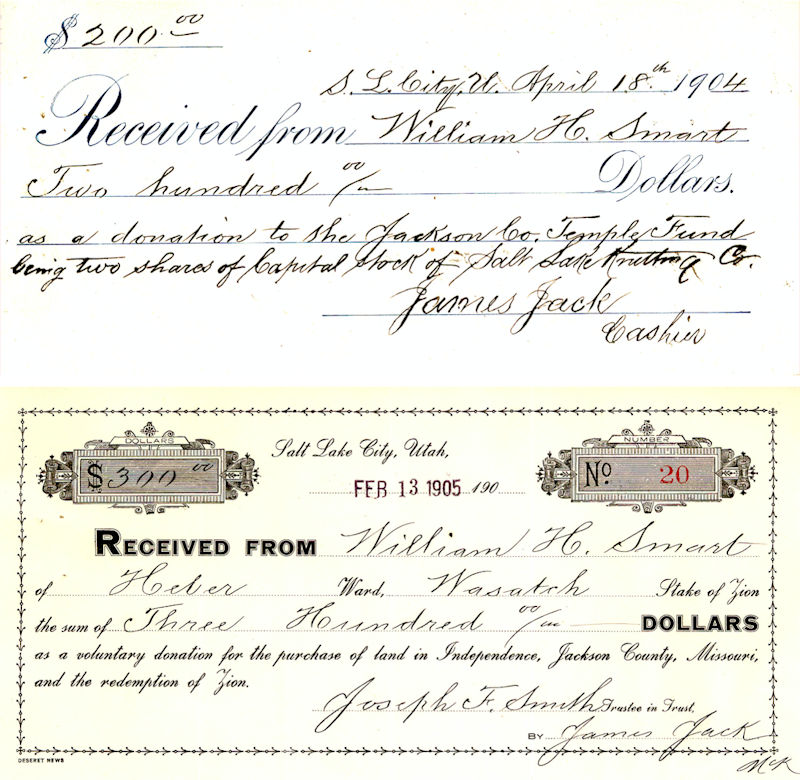
Figure 19. Receipts for Donation to the Jackson County Temple and Redemption of Zion Fund.
Soon thereafter, arrangements were made for the publication of the Liahona magazine164 for the missions of the Church in the United States. Six months after launching the magazine, Bennion requested that at least four US mission presidents and two other interested individuals meet in Independence on September 9, 1907, to form a corporation to be known as Zion’s Printing and Publishing Company. The choice of the name encompassed the essence of the “Redemption of Zion” concept.165 Zion’s Printing and Publishing Company was incorporated in October 1907.166 Zion’s also began the production of missionary tracts, hymnals, and books.167
[Page 173]

Figure 20. Mission Home and Office, 1907.
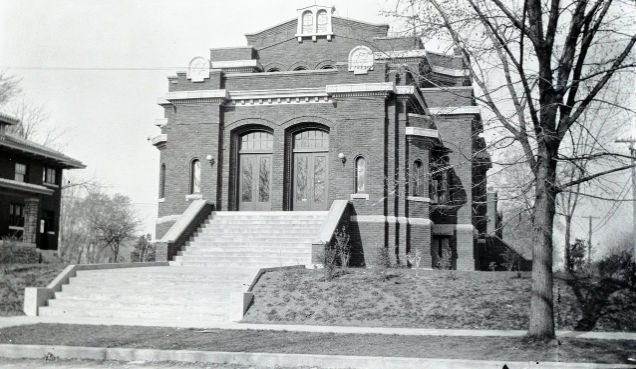
Figure 21. Latter-day Saint Chapel, Completed in 1914.
In 1912 ground was broken for a $25,000 chapel on the corner of Pleasant and Walnut and close to the mission home. The chapel was dedicated by President Joseph F. Smith in November 1914.168
[Page 174]

Figure 22. Otto Fetting (1871–1933).
1920–1994: The Redemption of Zion Continues
The Church of Christ: Revelation to Build a Temple
While a physical presence of these three church organizations had certainly been well established by the early 1920s, the building of the temple was another matter. However, on February 4, 1927, at his home in Port Huron, Michigan, Church of Christ Apostle Otto Fetting launched a dramatic effort toward building the temple on the Temple Lot.169 That morning, Fetting reported a visitation by a heavenly messenger, whom he subsequently identified as John the Baptist, wherein he was told: “The revelation that was given for the building of the temple was true and the temple soon will be started.”170 The church was commanded to erect the temple on the “sacred space” owned by the Church of Christ.171
[Page 175]
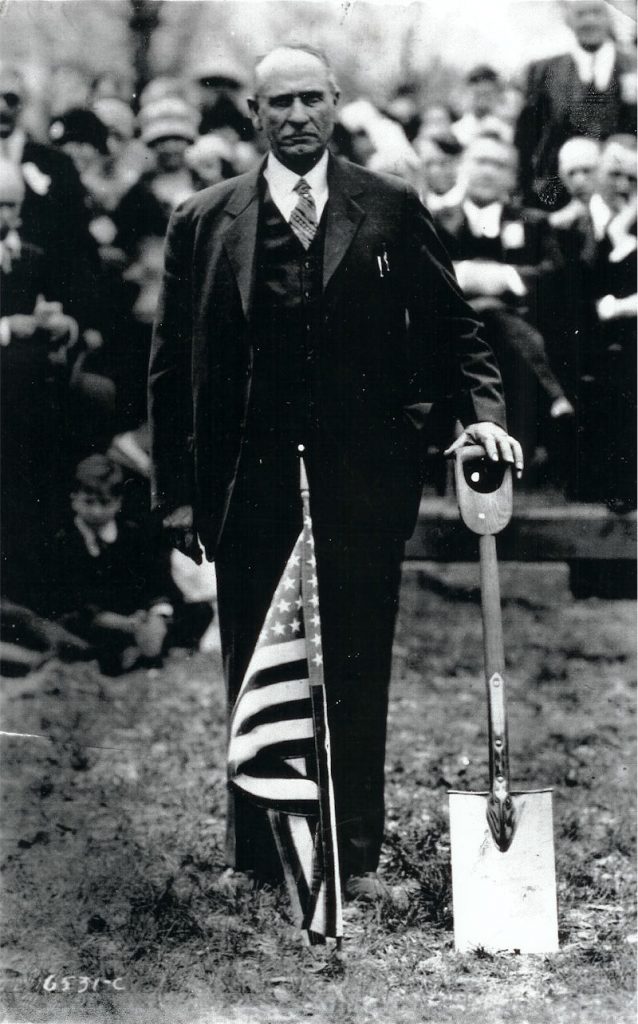
Figure 23. Bishop Frisbey Breaks Ground for the Church of Christ Temple on April 6, 1929.
On March 22, 1928, Fetting announced another angelic visitation and accompanying message. It specifically proclaimed that construction on the temple was to begin in the year 1929 and was to be completed within seven years.172 From the moment this message was broadcast throughout the church, the physical undertaking to build the House of the Lord would play a major role within the church for years to come.
In accordance with the instructions given in vision to Fetting, the Church of Christ held an impressive groundbreaking ceremony on Saturday, April 6, 1929.173
The Kansas City architectural firm of Norman L. Wilkinson was hired in 1930 by the church to develop sketches and plans for the proposed edifice.174 When asked by a reporter for the local Independence Examiner regarding the cost of the proposed temple, Wilkinson replied: “the cost would be somewhere around a half million dollars.”175 The [Page 176]Kansas City Star headlined and showcased on the front page of their September 7, 1930, edition, the prepared sketches of the “Extraordinary Temple the Church of Christ Has Begun To Build.”176

Figure 24. Architectural Drawing of the Proposed Church of Christ Temple, 1930.
Excavation commenced soon thereafter.177 However, the building of the temple, for a number of reasons, never materialized.178
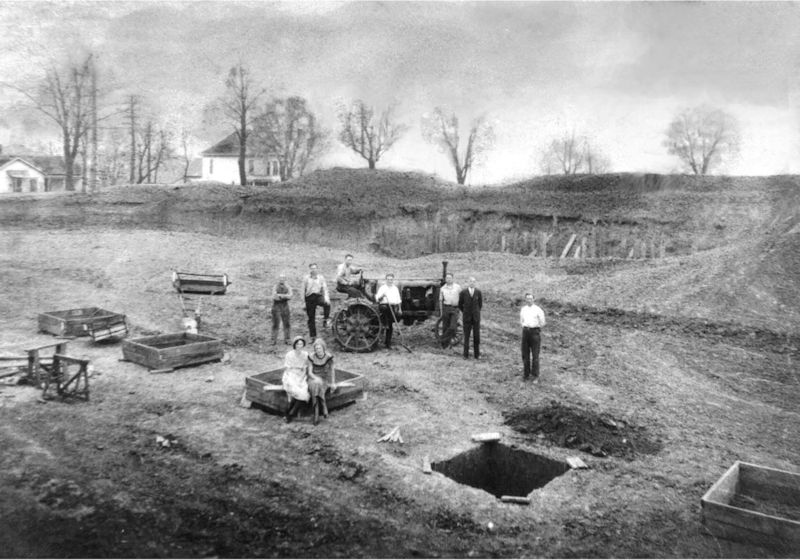
Figure 25. Church of Christ Temple Foundation, circa 1935.
[Page 177]In 1946, the city of Independence offered to backfill, at the city’s expense, the 1930s excavation site for the temple.179 Currently, the Church of Christ has no plans for the physical construction of the House of the Lord, even though the church does continue to maintain a temple fund.180
The Reorganized Church of Jesus Christ of Latter Day Saints: Temple Plans and Revelation
Acquiring the land for the eventual building of the temple had been an ongoing function of the RLDS Church for many years.181 Prophet-President Frederick M. Smith, in his April 6, 1926, conference address to the church stated:
And must I mention still before us the great task of building ultimately the Temple to which we have all looked forward? I have not forgotten it. I do not forget it. For in my dreams of Zion it is always in a prominent place of perspective. Can words make it any plainer than the foregoing that the building of the Temple is yet in the future? We will await developments.182
In 1942, Smith asked Church Historian Samuel A. Burgess to look into whether the temple “might be shifted considerable from that spot [the Church of Christ’s 2.75 acres] and still be in the confines of the sixty-three acres.”183 Burgess answered two weeks later and advised Smith that: “Any spot can be with even reasonable certainty be pointed out … since no land was owned at the dedication it would seem that north and west should be as much consecrated as south and east.” He concluded: “In other words, the exact spot is not known.”184
Church members rejoiced in 1968 when Prophet-President W. Wallace Smith announced a revelation at the Church’s World Conference that proclaimed: “The time has come for a start to be made toward building my temple in the Center Place. It shall stand on a portion of the plot of ground set apart for the purpose many years ago by my servant Joseph Smith, Jr.” The site was selected by 1974.185
Ten years after selecting the specific site for the temple’s construction, the long-awaited revelation setting the building process in motion was announced by Prophet-President Wallace B. Smith (son of W. Wallace Smith) to Church members at the April 1984 World Conference:
The temple shall be dedicated to the pursuit of peace. It shall be for the reconciliation and for healing of the spirit. It shall also [Page 178]be for a strengthening of faith and preparation for witness. … Therefore, let the work of planning go forward, and let the resources be gathered in, that the building of my temple may be an ensign to the world of the breadth and depth of the devotion of the Saints.186
The ground-breaking ceremony was held on April 6, 1990187 and the impressive temple was dedicated April 17, 1994.188
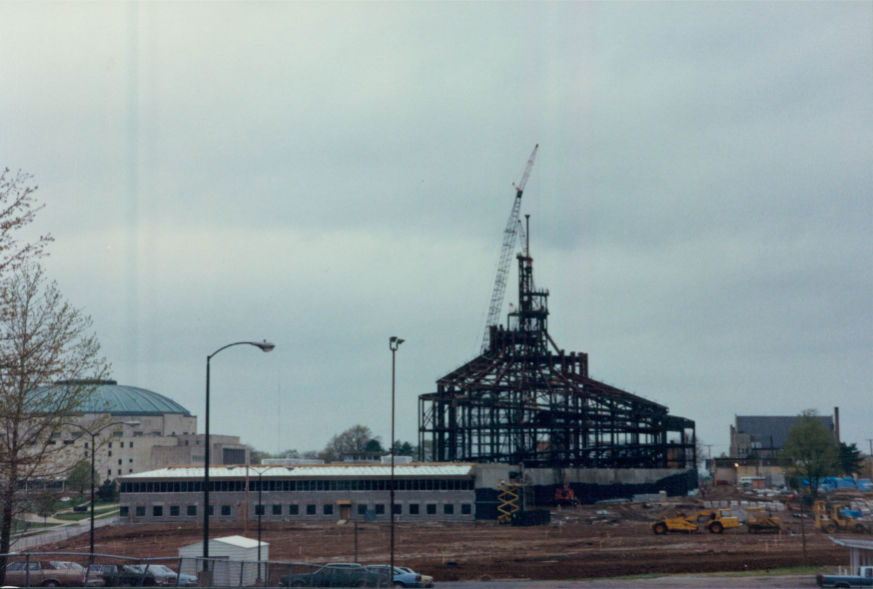
Figure 26. Reorganized Church of Jesus Christ of Latter Day Saints Temple Under Construction, ca. 1992–1993.
The Church of Jesus Christ of Latter-day Saints: Visitors’ Center
The property purchased by The Church of Jesus Christ of Latter-day Saints in 1904 remained undeveloped until 1968. After two different attempts over the years by the City of Independence/Board of Education to purchase the property from the Church,189 and concerned about the reality of eminent domain by the city of Independence, the Church made an announcement in December 1967 for the present Visitors’ Center. Plans were quickly developed and formally approved in April 1968.190 A groundbreaking ceremony was held the following August.191 Interestingly, in the development of those plans in early 1967 by church architect, Emil Fetzer, and with input directly from Alvin R. Dyer and approval by President David O. McKay, the awareness of the Joseph Smith inspired, expanded, twenty-four temple complex prepared in early 1833 was definitely taken into consideration. On March 10, 1967, a meeting of Dyer and Fetzer was held with McKay in his Hotel Utah apartment office. Dyer recorded the highlights of this session in his diary:
[Page 179]

Figure 27. Latter-day Saints Visitors’ Center, Dedicated in 1981.
We reported to the President that our study in this direction was to undertake, if we could … to ascertain which of the temple buildings designated would presumably be located on that part of the temple land that the Church owned. This we had arrived at [and] would be concentrated upon, for the erection of a building for the purpose intended … the basic structure of which could be used at a future date as part of the temple complex.
Dyer continued:
The proposed structure would be two stories high with a floor dimension of 61’0” x 87’0”, which dimension is the same as revealed to the Prophet Joseph as the size of the complex buildings.192
The Visitors’ Center stands on the northwest corner of the twenty-six acres at the intersection of Walnut and River streets. It is located south of the Community of Christ temple, and southeast of the chapel and headquarters’ offices of the Church of Christ. The edifice was dedicated on May 31, 1971, by President Joseph Fielding Smith.193
Perspectives of the Three Churches After 1994
Almost from its inception, the young Church of Christ, founded by Joseph Smith Jr. in April 1830, was imbued with a millenarian spirit. Asserting divine direction for the fast-growing church, Zion was, at first, only described as “on the borders by the Lamanites.” But with Smith’s [Page 180]visit to western Missouri in the summer of 1831, the city of Zion, or the New Jerusalem, was specifically situated in Jackson County with the center place designated as the village of Independence. Furthermore, the 1831 Church was told that the Millennial Temple was to be built “upon a lot not far from the courthouse.” For more than two years an attempt was made by members of the struggling Church to live the Law of Consecration and establish the city of Zion.194 That effort came to a tragic end in November 1833 when the Church was literally driven en masse out of Jackson County.195

Figure 28. 1935 Drawing of the Original December 1831 Partridge Purchase.
The phrase “Zion shall be redeemed,” specifically meaning a physical return to Jackson County, was first proclaimed by Smith in October 1833. With the reestablishment of a physical presence in Jackson County by the Church of Christ in 1867, followed by the Reorganized Church of Jesus Christ of Latter Day Saints in 1877, and then in 1900 by The Church of Jesus Christ of Latter-day Saints, the Redemption of Zion was undertaken in a most literal sense. However, today, little is said publicly of the Redemption of Zion by any of the various branches of the Restoration Movement.
[Page 181]
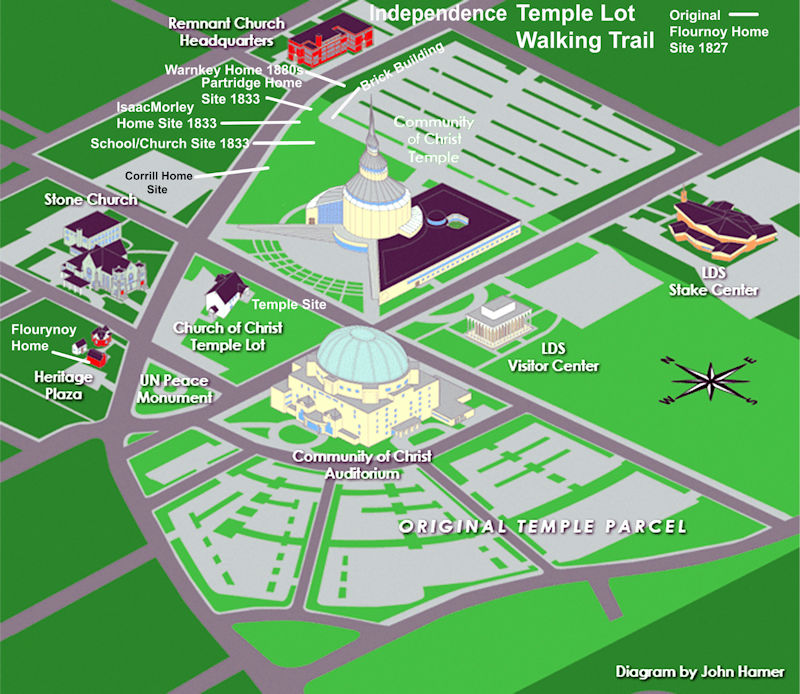
Figure 29. Aerial Layout Map of Temple Lot Property Today.
The three churches discussed in this essay will now be highlighted regarding their thoughts and positions on the center place, the New Jerusalem, the importance of the Temple Lot, and the Millennium.
Church of Christ
In 1952 there were rumors that The Church of Jesus Christ of Latter-day Saints had offered a large sum of money, perhaps a million dollars, for the two and three-quarters acres owned by the Church of Christ. Historian and author Craig S. Campbell interviewed Apostle William Sheldon in December 1990 regarding those rumors. Sheldon told Campbell that at one time The Church of Jesus Christ of Latter-day Saints “offered us a blank check” for the property.196
Beginning in 2005, I had the pleasure and opportunity to meet with Apostle Sheldon on many occasions. At one such occurrence, I asked him: “What amount would it take for the Church of Christ to sell the Temple Lot?” His answer: “You could offer us a million dollars or a postage stamp. We would not take either.”197 On another occasion, I asked [Page 182]Sheldon a question regarding the church’s position on trying, again, to build the Millennial Temple on their property. He replied: “The temple was not a core objective of the church” and added “the primary focus of the church is missionary work and building up the Kingdom of God.”198 Sheldon also stated: “The Church of Christ considers as their sacred duty to be not only the physical custodian of the property [the Temple Lot], but, additionally, and more importantly, the spiritual custodian of the Kingdom of God.”199
Reorganized Church of Jesus Christ of Latter Day Saints
Of significance in reviewing the more recent events in the post-1994 era and future of the Temple Lot from the perspective of the Reorganized Church of Jesus Christ of Latter Day Saints was the change of their name. As early as 1992 delegates to the World Conference of the Church asked the First Presidency to recommend a “much shorter institutional name.” The discussion continued over the next eight years. Finally, at the 2000 World Conference, the delegates voted to change the name to Community of Christ while legally retaining the incorporated name. The change became effective on April 6, 2001.200
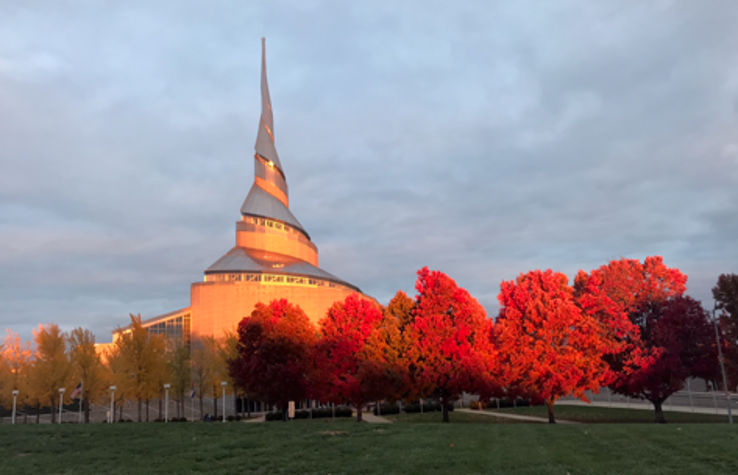
Figure 30. Community of Christ Temple, Dedicated 1994.
The Community of Christ takes the position that the Church has built the temple “in the Center Place”201 as envisioned by Joseph Smith in 1831. In accordance to revelatory instruction given to Prophet-President [Page 183]W. Wallace Smith and to his successor Prophet-President Wallace B. Smith, the “plot of ground set apart for this purpose … by my servant Joseph Smith, Jr.” was selected for “building my temple in the Center Place.” The temple was dedicated in April 1994.202 At the time of the “groundbreaking” ceremony in 1990, wanting to clarify the church’s position regarding the Millennium, Smith stated to a reporter: “We are not building our temple as a means of signaling the Second Coming.”203
The RLDS Church produced a brochure in 1978 titled: The Temple: Ensign of Peace. One of the attractive pages is headed: “The Dream is Now: Purposes of the Temple.” The opening statement states simply: “The Temple will stand as a symbol of life’s deepest and truest meanings … as an architectural symbol revealing the contemporary meaning of the life and ministry of JESUS CHRIST.” Of the several statements listed, there are no comments regarding the Millennium or the New Jerusalem.204 Quoting again from Craig S. Campbell, he remarked:
The RLDS Church in the twentieth century has reversed direction from a millenarian and literal theology toward a more diverse nonmillennial doctrinal atmosphere. … While other Latter Day Saint groups have had difficulty sanctifying space in Independence, in many ways the nonmillennialization of the Temple Lot area is the opposite. The [Community of Christ] is desanctifying space, perhaps because, consciously or unconsciously, it feels the history of the Saints, especially Missouri history, is too difficult to reconcile with modern culture treads. … If one looks beyond the substantial dissent, the church has created for itself novel and powerful meanings for the twenty-first century. But these are far from traditional Latter Day Saint symbolism.205
The Church of Jesus Christ of Latter-day Saints
During the past fifty or sixty years little has been said by authorities of The Church of Jesus Christ of Latter-day Saints regarding the Redemption of Zion, the city of the New Jerusalem, the Millennium, or the temple or temples to be built in the center place.
Perhaps the most written commentary on the subjects relative to this discussion of the events relating to the city of New Jerusalem and the Millennium Temple are found in Bruce R. McConkie’s, subject-oriented, Mormon Doctrine, which first appeared in 1958.206 Under the [Page 184]heading “New Jerusalem” he stated that “the city of New Jerusalem will be built on the American continent.” McConkie continued: “it is to be built by The Church of Jesus Christ of Latter-day Saints; Jackson County, Missouri, is the spot designated by revelation for its construction.” He added, however, “It shall be built when the Lord directs.”207 And under the heading “Zion,” McConkie points out that the city of Zion is also called New Jerusalem and reiterates that it will be built in Jackson County.208
In 1972, Alvin R. Dyer, apostle and former member of the First Presidency, published an enlarged edition of his history of the early church in Missouri, containing glowing reports of the expansion of the Church’s holdings in the area. In his preface, Dyer emphasized that the prophetic history and future of the area “is a vital subject to every Latter-day Saint. … And come what may, in the time of the Lord, we, The Church of Jesus Christ of Latter-day Saints have a committed destiny in the ‘center place.’”209
As part of the United States bicentennial fervor, the Church published The Great Prologue: A Prophetic History And Destiny of America in 1976. Apostle and author Mark E. Peterson wrote that the culmination of America’s divine calling would occur when “the great modern City of New Jerusalem will be built in Jackson County, Missouri.” He added: “It is the center of the land, and there the city of Zion, or the New Jerusalem, will be built, a place of refuge and peace for the latter days.”210
Interestingly, only three years later in 1979, the Church quietly edited its tenth Article of Faith. Prior to this date it had declared “that Zion will be built upon this [the American] continent.”211 Beginning with the 1979 publication of the scriptures, the tenth Article of Faith now reads “that Zion (the New Jerusalem) will be built upon the American continent.”212
While some may dismiss this rewording as a long-overdue edit or nothing more than a simple clarification, the fact that the name of the millennial city of New Jerusalem was added to the language specifically, and shortly after the publication of The Great Prologue, certainly signified that the Church had not discounted or distanced itself from the early revelations given to the Prophet Joseph Smith in 1830 and 1831. Rather, the Church subtly added significance to this tenet of basic belief.
During the twentieth and twenty-first centuries, the Church has continued to quietly acquire land, not only in Jackson County, but throughout western Missouri.213 Campbell, in concluding his thoughts on this topic in a chapter headed “LDS Views Since 1900,” made this statement:
[Page 185]
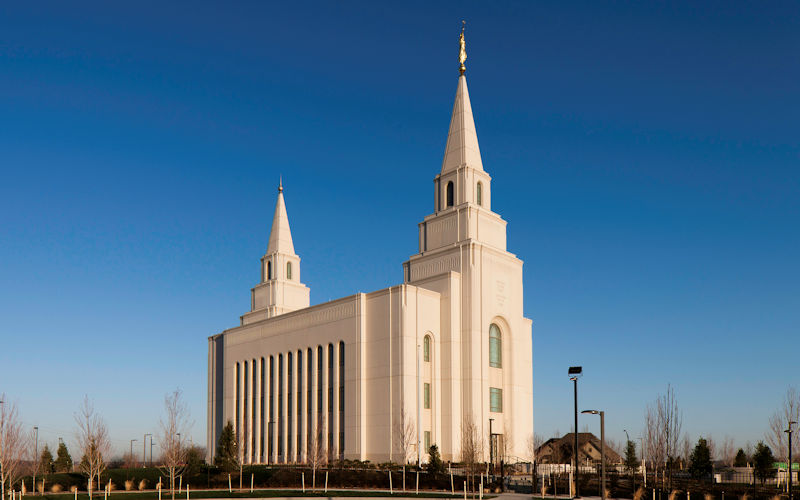
Figure 31. Latter-day Saint Kansas City Missouri Temple, Dedicated in 2012.
Despite church growth, the Kansas City area remains a paradox of the LDS realm. Some say that hesitation is bred of uncertainty, but the LDS Church does not want to cause undue millenarian speculation and unrest among the members.214
Nearly forty years later, after dedicating the Visitors’ Center, and to meet the needs of a growing church membership the surrounding three-state area, the Church announced plans to construct a temple in the Kansas City vicinity on October 4, 2008.215 The groundbreaking ceremony took place on May 8, 2010.216 An impressive dedication ceremony occurred on May 6, 2012.217Rather than utilizing the twenty-six acres purchased in 1904, the Church built the temple near the city of Liberty in Clay County, twelve miles north of Independence and across the Missouri River.
However, as those who listened to the October 2020 General Conference will attest, there has never been in recent memory more prophetic emphasis on the topics of the “gathering of Israel”218 and the work of “preparing ourselves and the world for the Second Coming of the Lord.”219
Final Thought
What else is required? How is it to be attained? And, perhaps, most importantly, what further direction will be forthcoming regarding the Millennial Temple and the city of New Jerusalem? Regarding [Page 186]the ultimate fulfillment implied in the adage “Redemption of Zion”, perhaps the statement of Apostle William Sheldon (Church of Christ) is applicable to all of the expressions of the Restoration. He said: “We will simply await the Lord’s further direction.”220 His thoughts are not much different from those of Bruce R. McConkie, who wrote in 1958, referring to the New Jerusalem and its attendant Millennial Temple: “It shall be built when the Lord directs.”221
One thing is certain about the future of the Temple Lot in the “center place” of Zion. In a revelation given to Joseph Smith on December 16, 1833, the Lord reminded his prophet: “There is none other place appointed than that which I have appointed; neither shall there be any other place appointed than that which I have appointed, for the work of the gathering of my saints” (LDS Doctrine and Covenants 101:17, 20; RLDS Doctrine and Covenants 98:4g–h).
[Page 187]Notes for Figures
1. George Edward Anderson Glass Plate Negative Collection, 1897-1927, PH 725, Church History Library, The Church of Jesus Christ of Latter-day Saints, Salt Lake City, Utah. Photo taken in 1907.
2. Photo by R. J. Addams, 2018.
3. Map prepared by Alexander L. Baugh, R. J. Addams, and Christopher Higham in 2019. Baugh and Higham are members of the faculty/staff at Brigham Young University, Provo, Utah.
4. Photo by R. J. Addams, 2020.
5. Photo by R. J. Addams, 2013.
6. Church History Library, The Church of Jesus Christ of Latter-day Saints, Salt Lake City, Utah, MS 2568 1. Revised drawing prepared at the direction of Joseph Smith, Jr. in Kirtland, Ohio, in 1833 by Frederick G. William. The drawing was carried by Orson Hyde and John Gould to Edward Partridge and others in Independence, Missouri, in September 1833. Used with permission.
7. Church History Library, MS 2568 1.
8. Church History Library, MS 2567. Original drawing prepared at the direction of Joseph Smith, Jr. in Kirtland, Ohio, in 1833 by Frederick G. William and mailed to Edward Partridge and others in Independence, Missouri, in June 1833. Used with permission.
9. Photos by R. J. Addams, 2016.
10. Photo courtesy of William (Bill) Curtis (b. 1936), Inde-pendence, Missouri. Used with permission.
11. Steel engraving by Frederick Piercy, in James Linforth and Frederick Piercy, Route from Liverpool to Great Salt Lake Valley (Liverpool; Franklin D. Richards; London: Latter-Day Saints’ Book Depot, 1855), 64. Brigham Young University, Harold B. Lee Library, Special Collections, VQ M273.41 P611r 1855 copy 2. https://contentdm.lib.byu.edu/digital/collection/NCMP1820-1846/id/17396/ (accessed March 8, 2021). Public Domain.
12. Linforth and Piercy, Route from Liverpool, 112.
13. Painting by John Willard Clawson, dated 1936. Gospel Media, The Church of Jesus Christ of Latter-day Saints. Permission for noncommercial use. [Page 188]https://www.churchofjesuschrist.org/media/image/lds-prophet-lorenzo-snow-clawson-c6e5fc5?lang=eng (accessed March 7, 2021).
14. Photo courtesy of Bill Curtis. Used with permission. This is the first known photo of the Temple Lot. The chapel was completed in 1889 and the photo taken presumably shortly thereafter.
15. Photo courtesy of the Church of Christ (Temple Lot), Independence, Missouri. Used with permission. The photo is noted “1890s.”
16. a. Photo courtesy of Bill Curtis. Used with permission. Date of photo is ca 1890s. b. Photo courtesy of Community of Christ Library-Archives, Independence, Missouri. With permission. Photo undated. Rachael Killebrew, librarian-archivist, has graciously facilitated my research and requests for material and other information.
17. Photograph of painting by Earnest Webbe, “Dream Of The Temple That Is To Be,” Autumn Leaves 20, no. 5 (May 1907), 193. http://www.latterdaytruth.org/pdf/100069.pdf (accessed February 28, 2021). Webbe, a professional illustrator, was born in Brixton, Surrey, England in 1876 and later immigrated to the United States. https://search.ancestry.com/cgi-bin/sse.dll?dbid=6598&h=10440179&indiv=try&o_cvc=Image:OtherRecord (accessed February 28, 2021).
18. Photo courtesy of Special Collections and Archives, Merrill-Cazier Library, Utah State University, Logan, Utah, A-0409. Used with permission. Date of photo is ca 1910.
19. Photocopies of the receipts were generously provided to the author by Thomas and William Smart (Salt Lake City, Utah, and Kirtland, Washington, respectively), grandsons of William H. Smart to whom the receipts were written in 1904 and 1905. Photocopies provided in 2006. These receipts and other related documents have susequently been donated to the William H. Smart Collection, Special Collections, Marriott Library, University of Utah, Salt Lake City, Utah.
20. Photo courtesy of Bill Curtis. Used with permission. Date of photo is ca 1907.
21. Photo courtesy of Bill Curtis. Used with permission. Date of photo is post-1914.
[Page 189]22. Photo courtesy of Paul D. Savage (b. 1951), Grain Valley, Missouri. Otto Fetting was born in 1871 and died in 1933. Photo undated.
23. Photo courtesy of the Church of Christ (Temple Lot). Used with permission. The photo is dated April 6, 1929.
24. Zion’s Advocate 7, no. 17 (November 1, 1930), front cover. http://www.cocsermons.net/zions_advocate/Zions_Advocate_1930_11_November.pdf (accessed March 8, 2021).
25. Photograph by C. Ed Miller, courtesy of the Church of Christ (Temple Lot). Used with permission. The photo is ca 1935.
26. Photo courtesy of Community of Christ Library-Archives. Used with permission. Date of photo is ca 1992-1993.
27. Photo courtesy of Ronald E. Romig (b. 1948), Independence, Missouri. Used with permission. Date of photo is 2017.
28. Photo of original 1935 document courtesy of Community of Christ Library-Archives. Used with permission. At the request of the Reorganized Church of Jesus Christ of Latter Day Saints the Hands Surveying Company of Kansas City, Missouri was hired to prepare a “Plat of the Original Temple Lot” sold by J. H. Flournoy to Edward Partridge on December 19, 1831.
29. Aerial layout map of “Independence Temple Lot” (as of 2017) courtesy of cartographer John Hamer (b. 1970), Toronto, Ontario, Canada. Used with permission.
30. Photocopy courtesy of Community of Christ Library-Archives, Independence, Missouri. With permission. Date of image is 1935. No date of when this image was initially microfilmed is available.
31. Kansas City Missouri Temple, The Church of Jesus Christ of Latter-day Saints. https://www.churchofjesuschrist.org/temples/details/kansas-city-missouri-temple?lang=eng (accessed March 8, 2021).



Go here to see the 3 thoughts on ““The Past and Future of the Temple Lot in Independence, Jackson County, Missouri”” or to comment on it.